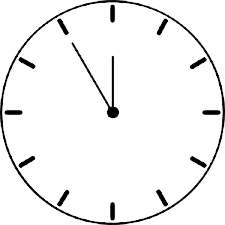Timer resolution is a critical aspect of computing that often goes unnoticed by the average user. In this article, we will delve into the intricacies of timer resolution, shedding light on its significance in the realm of technology. Understanding timer resolution is crucial for optimizing system performance and ensuring a seamless user experience.
Table of Contents
What is Timer Resolution
Timer resolution refers to the granularity or precision of the timing intervals used by a computer’s internal clock. In simpler terms, it determines how frequently the operating system updates the system clock and measures time. A finer timer resolution allows for more accurate timekeeping, crucial in various computing processes.
The Role of Timer Resolution in System Performance
Timer resolution plays a pivotal role in enhancing system performance. A higher resolution ensures smoother and more precise execution of time-dependent tasks, such as real-time applications, multimedia processing, and gaming. In this section, we will explore how timer resolution impacts different aspects of system performance.
Real-Time Applications and Timer Resolution
Real-time applications, including audio and video processing, rely heavily on precise timer resolution. A lower resolution can result in jitter and latency issues, negatively affecting the quality of audio and video playback. Discover how optimizing timer resolution can contribute to a seamless real-time experience.
Gaming Performance and Timer Resolution
For avid gamers, timer resolution is a critical factor that can influence the overall gaming experience. In this section, we will delve into how timer resolution affects frame rates, input responsiveness, and the overall smoothness of gameplay. Learn how tweaking timer resolution settings can give gamers a competitive edge.
Timer Resolution in Multimedia Processing
Multimedia professionals working with audio and video editing software understand the significance of precise timing. Explore how timer resolution impacts the accuracy of edits, transitions, and rendering processes, ultimately contributing to a more efficient multimedia workflow.
Windows Timer Resolution Settings
Windows operating systems offer users the ability to adjust timer resolution settings. Learn how to navigate these settings and optimize timer resolution for your specific needs. Discover the impact of changing timer resolution on system responsiveness and resource utilization.
Timer Resolution and Power Consumption
Timer resolution can also have implications for power consumption. This section explores the relationship between timer resolution settings and the energy efficiency of your device. Uncover tips for balancing performance and power consumption based on your usage requirements.
Troubleshooting Timer Resolution Issues
Occasionally, users may encounter issues related to timer resolution that can affect system stability and performance. This section provides insights into common problems associated with timer resolution and offers practical troubleshooting tips to address them.
Best Practices for Optimizing Timer Resolution
For users looking to maximize the benefits of timer resolution optimization, this section outlines best practices and recommendations. From understanding your specific use case to experimenting with different settings, discover how to fine-tune timer resolution for an optimal computing experience.
Conclusion
Timer resolution is a crucial yet often overlooked aspect of computing that significantly influences system performance. By understanding its impact on real-time applications, gaming, multimedia processing, and more, users can make informed decisions to optimize their system’s timer resolution settings. Stay tuned for a future with smoother, more responsive computing experiences through the mastery of timer resolution.
